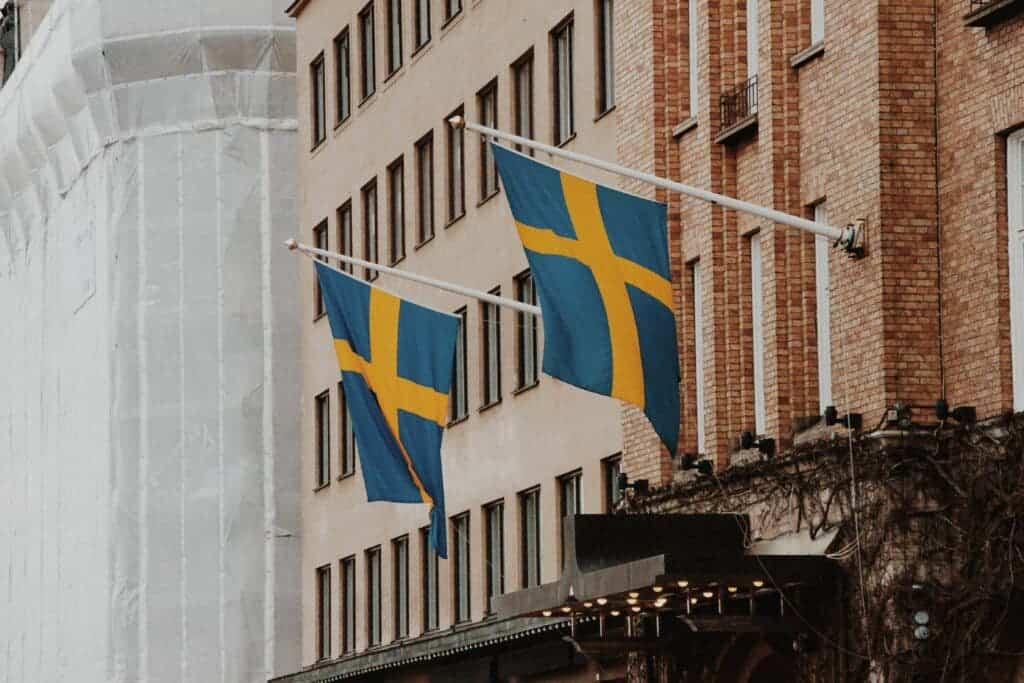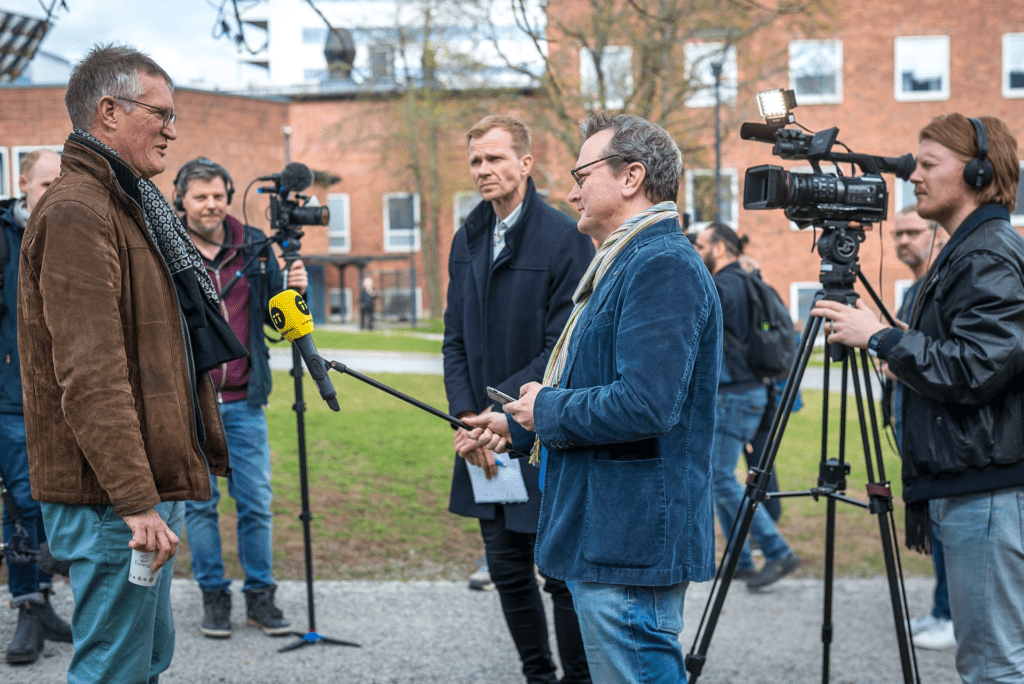In the early 2020 days of the pandemic, when most of the world was desperately implementing lockdowns and trying to limit the damage, one country stood out. Unlike its peers, Sweden didn’t want to lock down, and it didn’t really want masks and social distancing. Instead, the country championed a different approach that many saw (or wanted to see) as an alternative.
The “Swedish model” became hotly debated, with many anti-lockdown advocates citing it as an example. But when the dust settled, the results seem disastrous.

A failed experiment
With almost three pandemic years behind us, we all just want to be rid of all this as soon as possible. But while it’s easy to simply gloss over what happened in the pandemic’s early days, there are important lessons to draw — especially if we want to be better prepared in case something like this happens again.
In 2020, at least on paper, Sweden seemed to be one of the best-prepared countries in the world. They had made preparations for pandemics in previous years and had a designated responsible body in case of a disease outbreak. While this body didn’t have the power to draft law and could be theoretically overruled by politicians, this very rarely happens.
So when the Public Health Agency of Sweden decided to create a lenient response to the pandemic, that’s what Sweden went with. The agency prioritized the country’s economy and only implemented bans on large gatherings and some travel restrictions — but no lockdown.
Other countries looked in shock. Even large countries were shutting down in a desperate attempt to reduce the spread of cases, and while lockdown posed problems of its own, it did seem to work.

It wasn’t clear at first that the lockdowns would work. Nothing like this had ever been done in human history, and while the upside was debatable, the downsides were clearly evident.
By October 2020, there was some initial clarity. A study published in the Journal of the American Medical Association noted that Sweden, along with the US, marked a small category of two countries with high overall mortality rates that failed to rapidly reduce the numbers during the pandemic.
But the architects of the Swedish plan, overseen by Anders Tegnell, who resigned from the agency in March 2022, were selling it as a success; and officials from other countries, notably high officials from the US, looked at the Swedish response as an example to emulate.
Meanwhile, studies continued to point out that Sweden’s approach didn’t really seem to work.
“In the second wave of the COVID-19 pandemic, the Swedish national response continues to be an outlier with cases and deaths increasing more rapidly than in its Nordic neighbours.”
To justify the approach, Tegnell compared Sweden with other countries, saying that the difference between Sweden and other countries isn’t that big in terms of results. In other words, because Sweden had average results in the pandemic but didn’t really lock down, then the approach was successful.
“We’re not the best, but we’re definitely not the worst. That’s what I hear now: how much good did all these draconian [measures] do for anybody?”
But his comparison is misleading at best. It doesn’t make much sense to compare a rich, low-density country like Sweden to countries like Italy or Germany, let alone other less developed countries.
It makes most sense to compare Sweden with its Scandinavian neighbors. Now, two years later, Sweden has a total mortality rate (per capita) almost double that of Finland and Denmark, and more than double that of Norway. It’s even a bit higher than Germany’s.
A different universe
From the beginning, it almost seemed like Sweden’s pandemic decisionmakers wanted to achieve herd immunity as quickly as possible. Publicly, officials denied this. Both Tegnell and then-Prime Minister Stefan Löfven said that the approach is only “common sense”, and it’s better than lockdowns and other prevention measures that other countries were taking. Herd immunity, they said, is only a side effect.
But internal communication suggests otherwise.
Emails obtained through the country’s Freedom of Information laws suggest that the goal was always to develop herd immunity as quickly as possible, seemingly at the cost of many lives. “One point would be to keep schools open to reach herd immunity faster,” Tegnell notes in one email.
The idea that Sweden pursued a herd immunity approach was also highlighted by a paragraph in a Lancet study published in December 2020:
“From the onset of the COVID-19 pandemic, the Public Health Agency, Folkhälsomyndigheten (FHM), embarked on a de-facto herd immunity approach, allowing community transmission to occur relatively unchecked.”
But not everyone was on board. A group of 22 Swedish scientists published an op-ed calling for restrictions. This op-ed was criticized in Swedish media. Tegnell himself disputed the scientists’ claim that 105 Swedes were dying per day from COVID-19, although months later, revised government data would show that the critics were right — and Tegnell was wrong.
But not everyone was on board. A group of 22 Swedish scientists published an op-ed in calling for restrictions. This op-ed was criticized in Swedish media. Tegnell himself disputed the scientists’ claim that 105 Swedes were dying per day from COVID-19, although months later, revised government data would show that the criticis were right — and Tegnell was wrong.
‘”It has been so, so surreal,” said Nele Brusselaers, a member of the group and a clinical epidemiologist at the prestigious Karolinska Institute. It is strange, she said, to face backlash “even though we are saying just what researchers internationally are saying. It’s like it’s a different universe.”
Tegnell was unapologetic and continuously critical of lockdown measures, even as the data continued to be damning of Sweden’s approach.
“UK mortality would have approximately doubled had Swedish policy been adopted, while Swedish mortality would have more than halved had Sweden adopted UK or Danish strategies,” one study noted.
An important part of the problem was nursing homes. Sweden was reluctant to offer protection, and it showed. In fact, one 2022 report noted that Swedish authorities denied care to seniors and those suffering from other conditions, and that government measures were “late and inadequate”.
“The Swedish response to this pandemic was unique and characterised by a morally, ethically, and scientifically questionable laissez-faire approach, a consequence of structural problems in the society. There was more emphasis on the protection of the “Swedish image” than on saving and protecting lives or on an evidence-based approach,” the report reads.
“A small group of so-called experts with a narrow disciplinary focus received a disproportionate and unquestioned amount of power in the discussion, nationally and internationally. There was no intellectual/scientific discussion between stakeholders.”
The report goes on to call the spread of the virus in society the “single most important factor behind the major outbreaks and the high number of deaths in residential care ”, concluding that “the strategy failed to protect the elderly”.
In fact, the vulnerable were sometimes simply abandoned.
“Many elderly people were administered morphine instead of oxygen despite available supplies, effectively ending their lives,” the researchers wrote. “In densely populated Stockholm, triage rules stated that patients with co-morbidities were not to be admitted to intensive care units, on grounds that they were “unlikely to recover,” the report adds.
Essentially, the Swedish strategy was made to avoid inconveniencing the upper and middle class as much as possible, and conserve a public image, rather than to save lives — and it showed. The Swedish strategy was also based on flawed scientific assumptions that were perpetuated by authorities, such as the idea that if masks are imperfect they shouldn’t be used, or that if people are not symptomatic, they can’t spread the disease.
There was also something else Sweden’s decisionmakers miscalculated or didn’t care about: vaccines.
The world was waiting for vaccines. Sweden didn’t and paid the price
At the end of 2020, Sweden’s healthcare system was overwhelmed and the country begrudgingly started implementing some of the measures that were already established in other countries. By that point, Sweden already had a much higher mortality rate than expected and things looked bad.
Yet, even as a year passed and Sweden’s strategy seemed disastrous, some supporters still remained, and one of the few remaining arguments was that other countries had simply “borrowed lifesaving” — when they would open up, they would catch up to Sweden’s mortality rate, and with extra lockdowns that were useless.
Even in a world without vaccines, this is questionable. Infectious modeling had already shown that so-called “circuit-breakers” are essential to “flatten the curve” of infections and make sure medical systems aren’t overwhelmed (and can save more lives). But there was another point to delaying the spread of the disease: the more people you can vaccinate, the more lives you can save.
Granted, vaccines came earlier than expected; they were also more effective than most people expected, and there was an unexpected number of vaccine successes. But if you could make a thin, frail, and likely faulty argument for Sweden’s approach before vaccines, there’s nothing going for it once vaccines enter the stage.
Tegnell has resigned from his position and appeared to pursue a role at the World Health Organization. He remains a divisive character in Sweden and beyond, with his failure to protect those in nursing homes and his reluctance to impose measures like lockdowns and face masks strongly criticized. But a Swedish commission analyzing the country’s response found it to be “fundamentally correct” and just criticized that measures and restrictions were taken way too late.
Ultimately, the data paints a pretty damning picture. Sweden took a unique approach, and it hasn’t paid off. In fact, it seemed to have condemned people that could have otherwise been saved.
This article has been edited. The first version mentioned that Tegnell got a job at the WHO, which was claimed initially by Sweden’s Public Health Agency, but ultimately this appeared to be only a misunderstanding.



